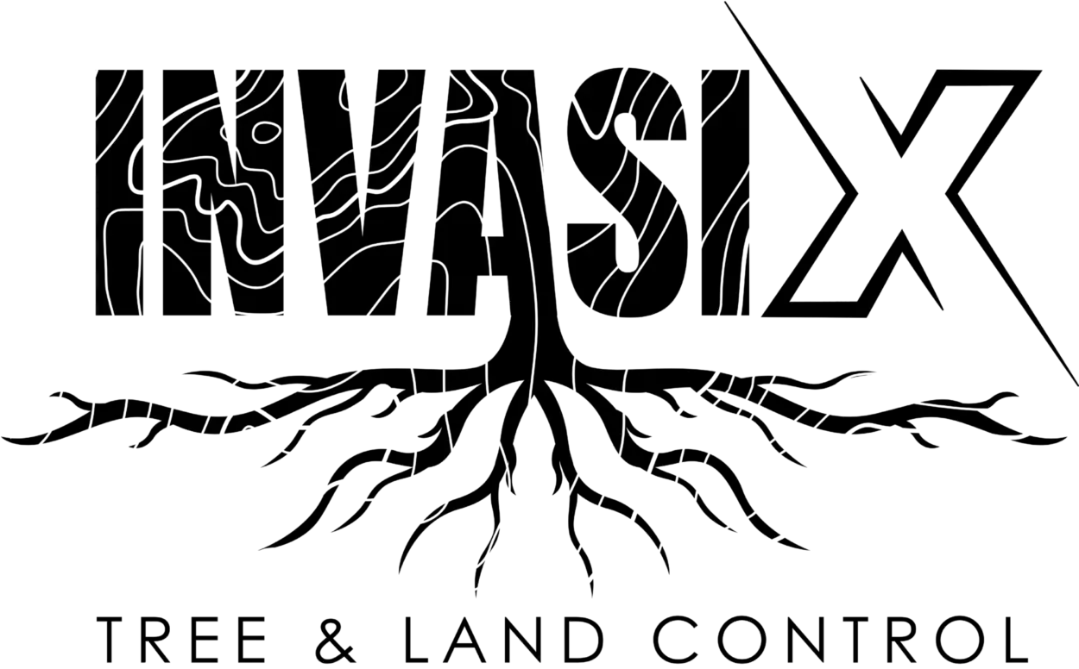Introduction to Invasive Species Control
Invasive species control has emerged as a significant priority for ecosystems worldwide. These species, often introduced accidentally or deliberately, can rapidly dominate local environments, leading to detrimental effects on native flora and fauna. Implementing effective control measures is critical to preserving biodiversity and ensuring that ecosystems remain balanced and healthy.
Understanding Invasive Alien Species
Invasive alien species refer to organisms introduced to environments where they have no natural predators. This absence allows them to proliferate unchecked, often outcompeting indigenous species for resources. Key examples include species like the notorious bracken, which can form dense infestations that choke out native plants and alter the habitat entirely. Understanding the biology and ecological impacts of these species is essential for developing strategies for their control.
The Importance of Managing Invasive Species
Managing invasive species is crucial for maintaining the ecological integrity of affected regions. Invasive species control helps protect native biodiversity, ensures the longevity of local ecosystems, and can prevent the economic costs associated with their spread. Industries like agriculture and forestry, particularly Tree & Land Control services, can suffer immense losses due to these invasive organisms.
Effective management strategies may include physical removal, chemical control methods, and public education campaigns to prevent further spread. Each tactic requires precise execution and ongoing monitoring to adapt methods as needed. By investing in comprehensive management plans, regions can safeguard their natural resources and protect their economic interests, ensuring that invasive species do not compromise ecological or societal well-being.
Identification and Monitoring of Invasive Species
Recognizing Invasive Species in Your Area
Invasive species control begins with proper identification. These organisms disrupt native ecosystems and can lead to a loss of biodiversity. Recognizing them requires knowledge about local flora and fauna. Individuals should be familiar with dominant species in their region to notice unusual changes effectively.
Focus on species that spread quickly or show aggressive growth patterns, such as Bracken infestations. Knowing how these species affect local ecosystems helps in early detection and management. Research studies highlight the importance of understanding invasive alien species to address the problem adequately.
Monitoring Tools and Techniques
Technology and community engagement are vital for effective invasive species control. Many tools and techniques can aid in monitoring these species. Digital platforms, apps, and online databases offer real-time reporting systems where sightings can be shared. This method supports a multitude of data collection, facilitating quicker response actions. Tools like GPS coordinate devices help track species dispersion effectively. Satellite imagery provides visual evidence of changes in land patterns, assisting authorities in implementing Tree & Land Control measures.
Citizen science programs engage the public in monitoring activities, providing valuable local insights. These initiatives empower communities to contribute to environmental stewardship. Accurate data collection and analysis guide the implementation of targeted strategies for managing invasive populations. Ensuring constant vigilance and monitoring of these ecosystems helps maintain ecological balance.
Methods for Invasive Species Control
Physical and Mechanical Control
Physical and mechanical methods offer practical solutions for invasive species control. These techniques include manual removal, trapping, and physical barriers. Regular monitoring and maintenance are necessary for effectiveness. Operators might employ machinery for large-scale interventions, especially in handling Tree & Land Control initiatives.
In the Virgin Islands, reliable physical control is crucial due to the diverse range of ecosystems. By focusing efforts on sensitive areas, local authorities can mitigate damage caused by alien intruders. Regularly scheduled inspections help maintain these efforts over time, reducing long-term harm.
Chemical Treatments
Chemical treatments involve applying herbicides, pesticides, or other chemical agents to target specific invasive species. This method requires careful application by trained professionals to minimize environmental impact. Chemical solutions can be particularly effective in combating bracken infestations and other persistent challenges.
Such treatments complement physical control methods, enhancing overall effectiveness. In the Virgin Islands, responsible usage ensures the protection of native flora and fauna. This dual strategy supports ongoing management efforts and helps restore ecological balance to affected areas.
Biological Control Strategies
Biological control uses natural enemies to suppress the population of invasive species. By introducing predators, diseases, or parasites that naturally limit the invasive species, communities can achieve sustainable control. This method constitutes a long-term solution that aligns with the natural ecosystem dynamics.
Virgin Islands authorities often prioritize biological control due to its environmentally friendly nature. By maintaining a balance within the ecosystem, this method contributes to lasting invasive species control. Collaborative efforts with international partners extend the reach and scope of these strategies, ensuring comprehensive results for Tree & Land Control projects.
Role of Tree & Land Control in Managing Invasive Species
Managing invasive alien species requires effective tree and land control strategies. Invasive species control focuses on curbing the spread of these species, which often disrupt local ecosystems. The Virgin Islands (UK) face challenges with various alien species that threaten native biodiversity. Targeted efforts through tree management and land restoration can mitigate these threats.
Effective Tree Management Techniques
Effective tree management involves selective clearance and maintenance of native tree populations. Removing invasive species like bracken requires persistent effort. One technique involves cutting and covering the ground with mulch to prevent re-emergence. Enhancing tree health through regular monitoring and pruning prevents the establishment of invasive species. For more information on effective tree management practices, one can refer to scientific research on tree management.
Land Restoration Practices
Restoring land to its native condition supports biodiversity and reduces the foothold of invasive species. Techniques like reforestation with indigenous plant species help restore ecological balance. Introducing natural barriers on land, such as hedges and water bodies, hinders the spread of alien species. Regular monitoring and removal of young invasive plants need to be part of the restoration practice. Robot-assisted cleaning may enhance control over dense invasions, improving bracken infestations management efficiency. With these practices, Tree & Land Control becomes a cornerstone in invasive species control, ensuring the Virgin Islands (UK) retain their unique ecological character. Collaboration among local authorities, scientists, and residents remains key to successful implementation and long-term management.
Addressing Specific Challenges: Bracken Infestations
Characteristics and Impact of Bracken
Bracken, a pervasive fern species, poses significant challenges to Tree & Land Control efforts. Its rapid growth and aggressive spread make it a notable invasive species. Dense stands of bracken suppress native flora, reduce biodiversity, and disrupt ecosystems. The fern thrives in a variety of environments, from woodlands to grasslands, impacting soil quality and potentially altering habitats crucial for native wildlife.
The impact of uncontrolled bracken infestations extends beyond ecological disruption. Bracken is toxic to livestock if ingested in significant amounts, posing risks to agricultural activities. Furthermore, its dense fronds can increase fire hazards, especially in dry conditions. These characteristics necessitate effective invasive species control measures.
Control Methods for Bracken Infestations
Controlling bracken requires a multifaceted approach. Manual methods involve the physical cutting of fronds multiple times during the growing season. Repeated cutting can deplete the plant’s energy reserves, reducing its vigor over time.
Chemical control involves the application of herbicides, which can be effective when correctly timed and applied. It’s essential to use herbicides approved for use in bracken management to avoid adverse environmental impacts. Aerial spraying allows for efficient coverage in larger infestations.
Biological control introduces natural predators or diseases that specifically target bracken. While this method is still under research, it holds potential for sustainable management. Integrated management combines physical, chemical, and biological strategies to achieve long-term results.
The management of bracken infestations calls for careful planning and sustained effort. Regular monitoring and adaptive management strategies are crucial to address the persistent challenge posed by this invasive species.
Community Involvement and Education
Engaging Local Communities
Invasive species control requires active participation from local communities to be effective. Communities in the Virgin Islands have a significant role in managing such issues, including Tree & Land Control and bracken infestations. Engaging community members starts with raising awareness about the threats posed by invasive species to both local biodiversity and livelihoods.
Community-led initiatives often prove successful in identifying invasive species early. Organizing local clean-up events and workshops can empower residents to act as stewards of their land. Providing tools and training for hands-on management strengthens community bonds while reinforcing the importance of ecosystem conservation. Collaborative efforts can lead to sustained, long-term results that benefit both the environment and the community.
Educational Programs and Resources
Education is a cornerstone in the fight against invasive species. Creating and distributing educational materials ensures the dissemination of reliable information about invasive species and control methods. Schools, community centers, and local governments can host seminars that teach residents about recognizing invasive plants and animals. Topics can cover the impact of invasive species on native flora and fauna, as well as strategies for effective Tree & Land Control.
Accessible online resources can also support these programs. Websites dedicated to invasive species management can offer downloadable guides or host forums for community discussions. Institutions and environmental organizations might provide training sessions for volunteers to become local experts, promoting a well-informed community. By equipping individuals with knowledge, educational programs transform passive observers into proactive participants, enhancing the effectiveness of local intervention efforts.
Conclusion and Future Directions
Summary of Key Points
Invasive alien species pose significant challenges to ecosystems, economies, and biodiversity. Effective invasive species control requires a multi-faceted approach. Key strategies include early detection and rapid response, which are critical in preventing the establishment of new invasive populations. Engaging local communities and stakeholders in both awareness and active control measures enhances success rates.
Tree & Land Control techniques are effective in managing invasive plant species, particularly in areas with complex vegetation structures. Mechanical removal, biological control, and chemical treatments are viable methods, each with its own set of considerations in terms of environmental impact and sustainability.
Specific issues, such as bracken infestations, demand tailored interventions. Utilizing herbicide applications along with controlled burning can significantly reduce bracken cover. Continuous monitoring and adaptive management plans are essential to address the dynamic nature of invasive species.
Looking Forward: The Future of Invasive Species Management
The future of invasive species management lies in integrated approaches combining technology, policy, and community involvement. Innovations in technology, such as the use of drones for remote sensing and monitoring, can enhance early detection capabilities and map infestations with precision.
Policymakers need to enforce stricter biosecurity measures at borders and trade points to prevent the introduction of potentially invasive species. Collaborative international efforts facilitate sharing knowledge and resources, strengthening global biodiversity conservation.
Community engagement remains a cornerstone. Educational initiatives that raise awareness about the impacts of invasive species and promote proactive measures can lead to substantial improvements. Citizen science projects can leverage local knowledge and expand data collection efforts.
Investing in research is critical to understanding the long-term ecological impacts of invasive species and developing innovative control methods. Policymakers, scientists, and communities must work together to protect native biodiversity and maintain ecological balance.


